In: painting
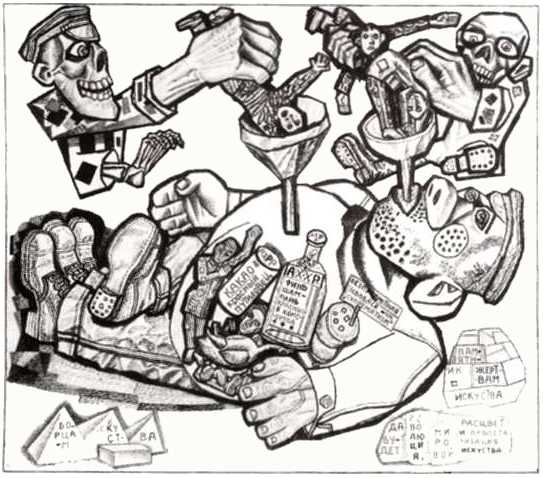
Pavel Filonov | The Formula of Contemporary Pedagogy of IZO, 1923
October 21, 2022Pavel Filonov | The Formula of Contemporary Pedagogy of IZO, 1923
He was walking about with a noose round his neck and didn’t know. So I told him what I’d heard about his poems.
. . . . . . . .
Yevgraf: This is a new edition of the Lara poems.
Engineer: Yes, I know. We admire your brother very much.
Yevgraf: Yes, everybody seems to.. now.
Engineer: Well, we couldn’t admire him when we weren’t allowed to read him…
Yevgraf: …No.
(both quotes from Boris Pasternak’s tale of Russia before and after the Russian Revolution Dr. Zhivago)
A defining book in my reading and understanding of art history in the 20th century is Boris Groys’ The Total Art of Stalinism: begun when the USSR was still in existence, Groys was able, with the fall of that empire, to access more information, and offer a more nuanced take upon the years post Russian Revolution, as it pertains to the arts in that rare and unique historical moment. Amusingly, I became aware of it after participating in a panel about modernism, and horrifying my fellow speakers by stating that it had failed, horribly, but that its relevance was in its ideals…
Several points stay with me, in considering Pavel Filonov’s work. One is that, in a correlation to the backward economic state of Russia making it fertile ground for a radical new approach and the subsequent revolution, the artistic milieu also suffered from this. It’s not incidental that so many significant artists – not just to Russia but to ‘western’ art history – like Malevich or the Suprematists flourished during the first heady days of the NEP. Experimentation and a sentiment that ‘anything was possible’ was pervasive and defining, with a desire to irrevocably fracture from the ‘old.’
This, of course, all ended badly, and the promised freedoms – whether artistic or personal – were soon not just reigned in, but suppressed, and a cultural exodus from the USSR to other places was predictable.
Filonov (1883 – 1941) served in WWI and would die of starvation during the siege of Leningrad, the once and present St. Petersburg, in the war that followed the ‘war to end all wars.’
The painter, art theorist and poet was an outsider, even during the pre and immediately post revolutionary days of promise: after several failures, in “1908 Filonov was admitted at last to the Academy of Arts. His works attracted the attention of both students and professors by their unusualness: they were not abstract and depicted their subject with full likeness, but were executed in garish, bright colors – reds, blues, greens and oranges. This manner did not conform to the Academy standards, and Filonov was dismissed “for influencing students with the lewdness of his work”. Filonov protested the decision of the rector Beklemishev, and was rehabilitated, but after studying for two years he left the Academy in 1910.”
He was one of many whose works were deemed degenerate, as they eschewed official socialist realist policy. He’d be lost to us, in terms of history, but for the efforts of his sister Yevdokiya Nikolayevna Glebova: “She stored the paintings in the Russian Museum’s archives and eventually donated them as a gift. Exhibitions of Filonov’s work were forbidden. In 1967, an exhibition of Filonov’s works in Novosibirsk was permitted. In 1988, his work was allowed in the Russian Museum. In 1989 and 1990, the first international exhibition of Filonov’s work was held in Paris.
During the period of half-legal status of Filonov’s works it was seemingly easy to steal them; however, there was a legend that Filonov’s ghost protected his art and anybody trying to steal his paintings or to smuggle them abroad would soon die, become paralyzed, or have a similar misfortune.”
It’s unsurprising that Filonov was deeply influence by fellow dissident Klebnikov: and his works – whether the obvious disdain present in this piece The Formula of Contemporary Pedagogy of IZO, or the more stark Those Who Have Nothing To Lose, or Animals, that would make a fine illustration for Orwell’s Animal Farm decades later – have an unflinching quality.
More of Filinov’s life and legacy can be learned here (and was the source cited for the biographical quotes about his life and work).
~ Bart Gazzola
Read More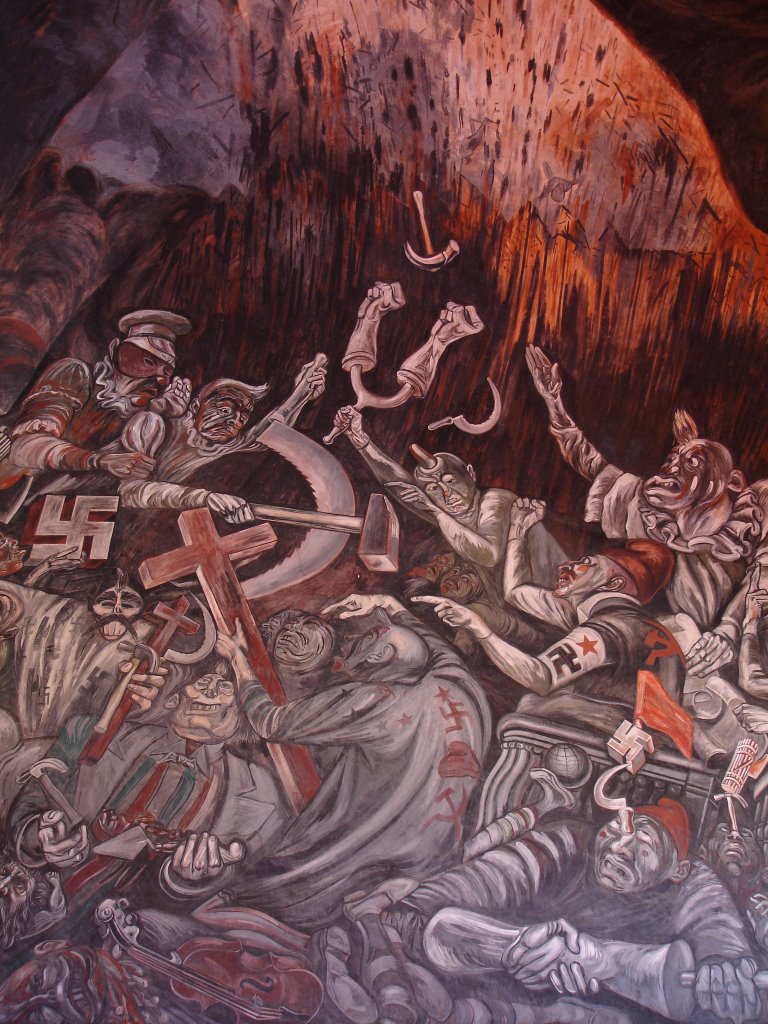
José Clemente Orozco | The Clowns of War Arguing in Hell, 1944
October 6, 2022José Clemente Orozco | The Clowns of War Arguing in Hell, 1944
Fresco, Palacio de Gobierno, Guadalajara (alternately known as Carnival of the Ideologies).
Do I look like the kind of clown that could start a movement? (from the film Joker, 2019)
And butchered, frantic gestures of the dead. (Siegfried Sassoon, 1886 – 1967)
This fresco, created only five years before the artist’s death, is a good example of how ‘Orozco’s late works were characterized by a deep sense of anguish and pessimism as the artist grew skeptical about the future of humanity in the wake of sweeping technological advancements.’ (from here) The facile art historical reading is that this work was Orozco’s reaction to WWII, but even a quick perusal of his impressive body of work, and the cultural and social milieu he existed within, will indicate that this is a more complex and personal artwork than that.
It is, bluntly, a horrifying piece, and intended to be so: painted in the final days of WW II, one might see this as the answer to that image of the conference at Yalta, with FDR, Churchill and Stalin, still pretending to be allies and not with their knives out to gluttonously divide the spoils of war.
Recently I was lucky enough to write about the work of Orozco’s colleague Rufino Tamayo, who eschewed the political discourse that this artist – and other contemporaries like Diego Rivera or David Alfaro Siqueiros – considered essential to Mexican art. Orozco is at the opposite end of this spectrum from Tamayo: in this regard, Octavio Paz [the internationally renowned essayist and poet] once remarked “Orozco never smiled in his life.” (from here) Perhaps that is because – as with this work – Orozco had little use for genteel diplomacy, and knew that once you saw horrors, it was a conscious act of morality to not look away….I am also researching the Russian – Canadian artist Paraskeva Clark, right now, and her aesthetic was to respond to, and reflect, the world she lived within. That is what Orozco is doing here.
But if I’m honest, the reason this older work holds my attention now and I want to share it here is because it seems that very little has changed, in our political discourse, and that we’re still – willingly or press-ganged – onto Das Narrenschiff [A Ship of Fools], a favourite theme of Hieronymous Bosch and so many others….
A quick perusal of the civic candidates standing for office in my space of Niagara only emphasizes this appropriate cynicism.
Much more about Orozco’s life and legacy can be seen here.
~ Bart Gazzola
Read More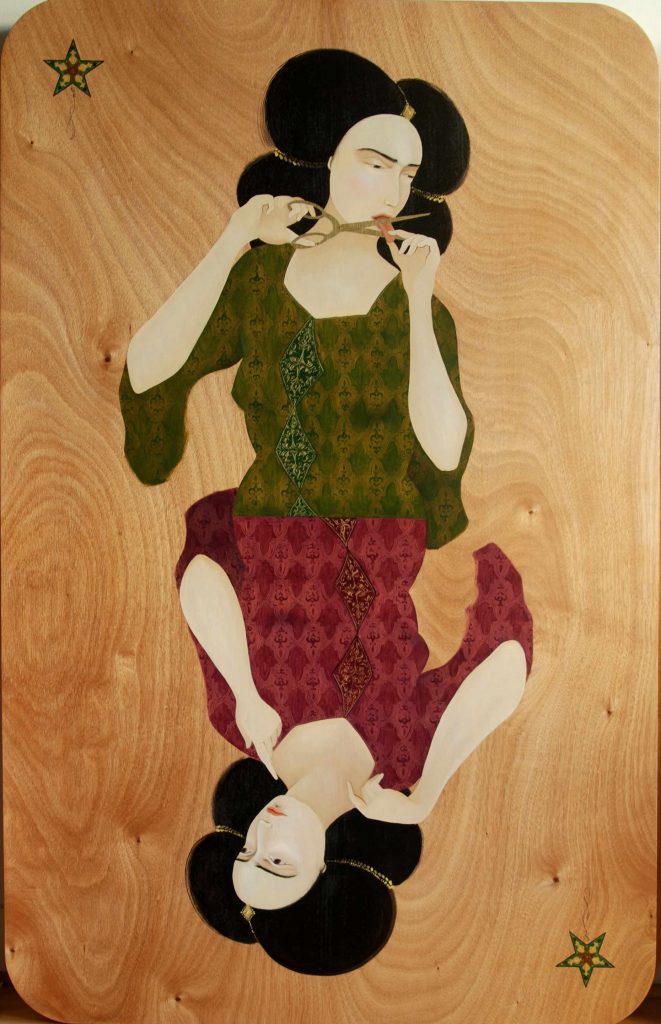
Hayv Kahraman | Migrant 3, 2009
September 29, 2022Hayv Kahraman | Migrant 3, 2009
Oil on panel 70 x 45 in. (177.8 x 114.3 cm.)
Hayv Kahraman was born in Baghdad, Iraq, in 1981 but now lives and works in Los Angeles. She describes her work as being “a vocabulary of narrative, memory and dynamics of non-fixity found in diasporic cultures are the essence of her visual language and the product of her experience as an Iraqi refugee / come émigré. The body as object and subject have a central role in her painting practice as she compositely embodies the artist herself and a collective.”
This work was made around the same time as her series Marionettes which “explores this subject of female oppression with particular reference to war in the Middle East and specifically in her home land of Iraq. At the same time, she turns her attention to female subjugation found in the everyday, in a series of work focused on women and domestic life. Enslavement is depicted through strings controlling the movement of the women; they drift through the landscapes seemingly oblivious to, or accepting of, their fate.” (from a review in Contemporary Practices, 2010)
This image, as I was engaged in my frequent research about contemporary artists, caught my eye not just for its evocative if disturbing scene (that might be an act of self censorship, or a visual metaphor for a prohibition to speak or be heard), but also with what’s happening in Iran, right now. Feminism – that idea, affronting to so many, that people are all equal – is a contested narrative with overlapping and challenging voices, whether you’re listening to Hurston, Dworkin, Solanas, hooks, Simpson or Deer.
When geo politics enter the conversation – as with spaces where religion is a defining factor, such as the Middle East or the United States, lumbering like a rough beast towards not so much Jerusalem as Atwood’s Gilead – it only becomes more important to allow it to be defined personally, as, “the personal, as everyone’s so fucking fond of saying, is political.” (from the writings of Quellcrist Falconer, the founder of the Quellist movement, in Richard K. Morgan’s Altered Carbon)
As the work is titled Migrant 3, Kahraman might be ‘speaking’ of Iraq or of her new home, in the United States, just as the mirrored figures have differences, as time and experience takes upon any sense of self.
More of Hayv Kahraman’s work can be seen at both her IG and her site.
~ Bart Gazzola
Read More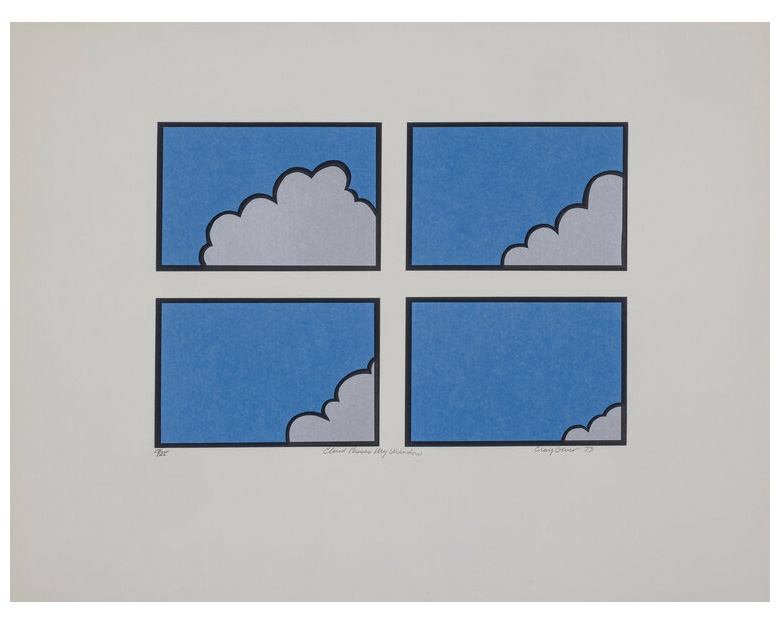
Craig Thomas Oliver | Cloud Passes My Window, 1973
September 15, 2022Craig Thomas Oliver | Cloud Passes My Window, 1973
Craig Thomas Oliver’s work always makes me melancholy. Perhaps it’s because not long after my return to Niagara I was approached to contribute an essay to an upcoming catalogue about the artist, published posthumously, as a means to bring attention to his art and accomplishments in Niagara. Later, I would include him in an exhibition I curated from the collection of Rodman Hall Art Centre, under the title of A Place To Stand, emphasizing artists in that archive who had built a place for others to grow and prosper within St. Catharines and Niagara. Both of those instances strike me as being about moments lost, or passing, with an implicit act of grieving.
Cloud Passes My Window is a small, delicate meditation, with clean, vibrant colours, like a sky so blue it might have been hammered into place. If you’ve visited Niagara Artists Centre (NAC) and their upstairs terrace – the CTO Terrace, named for Oliver, as a founding member of the artist run centre – this motif is familiar to you. On the left wall, a massive reproduction of Oliver’s simple and pristine white cloud on blue dominates the second storey space. It’s an amusing contrast, of the solidity of the architecture and the whimsical, ephemeral clouds, repeated like in this image: but in this work, it slowly leaves us, like any cloud – or person – who was here, and now gone.
I’ve spent many an evening there, with various NAC events, but I always think of it from a clear sunny afternoon, at the end of my first month upon returning to Niagara, in August of 2015. The CTO Terrace is a site often filled with music, so whenever I see any of Oliver’s ‘cloud’ works, Yoko Kanno’s song Blue comes to mind (Never seen a blue sky / Yeah I can feel it reaching out and moving closer
There’s something about blue / Asked myself what it’s all for / You know the funny thing about it / I couldn’t answer / No I couldn’t answer…)
Unsurprisingly, Kanno’s song may be about death, absence and loss, too. I’ve been told my mind goes to dark places, but that’s not entirely true, with the bright blue skies that Oliver shares with us, and that fills a wall in the loft space that bears his name, with ‘his’ sky to the side and the full sky above us…
But a more apropos element of textual ‘collage’ would be from Allen Ginsberg’s Elegy for Neal Cassady, written in the early morning hours (5 – 5:30 AM) upon learning of the passing of his friend and sometime lover:
aethereal Spirit
bright as moving air
blue as city dawn
happy as light released by the Day
over the city’s new buildings –
Lament in dawnlight’s not needed,
the world is released,
desire fulfilled, your history over,
story told, Karma resolved,
prayers completed
vision manifest, new consciousness fulfilled,
spirit returned in a circle,
world left standing empty, buses roaring through streets —
garbage scattered on pavements galore
Upon Oliver’s passing, NAC Director Stephen Remus offered the following tribute: “Craig was a key figure in the first wave of innovative collective projects that set the tone of wit and satire that has endured to define NAC today. [These include] the Niagara Now Billboard Exhibition (1972), Downtown Street Banner Project (1973), The Johnny Canuck Canadian Ego Exposition (1974), and The Johnny Canuck Canadian Ego Exhibitionist (1976). Craig was a master printmaker and he produced print work by many of his fellow NAC artists including John B. Boyle, Dennis Tourbin, Alice Crawley, and John Moffat.”
More about Oliver’s life and artwork can be read here.
~ Bart Gazzola
Read More
Different Water
June 22, 2022Different Water A Discussion on Art featuring work by Chrystal Gray and Mayra Perez Whiskey Bottle by Mayra Perez, Mask and... Read More
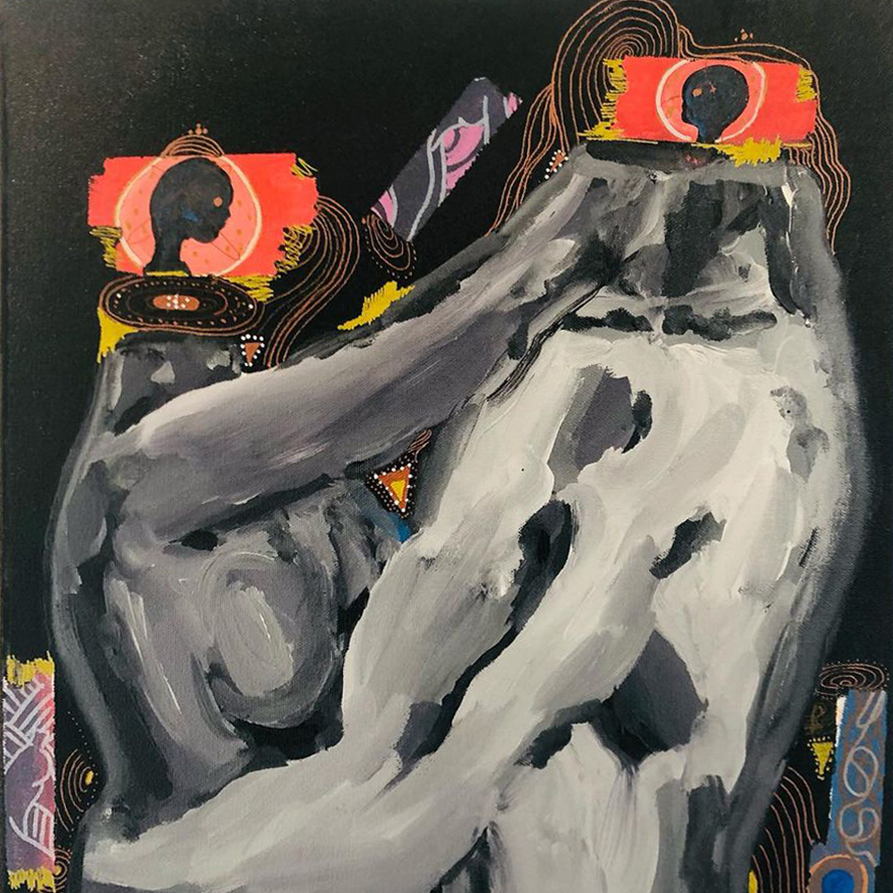
The Chain Links
June 20, 2022Faki Kuano | Sarah Cheon | Ashley Guenette The Chain Links × × curated. by The COVERT Collective is pleased to... Read More
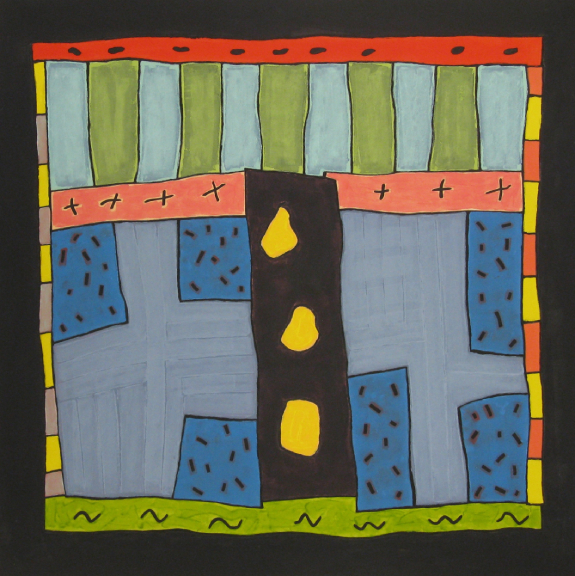
Tony Calzetta – Art Is Hell
April 22, 2022Tony Calzetta Art Is Hell Bart Gazzola sat down to talk with Tony Calzetta, whose decades long practice has been both... Read More

Ana Žanić – One Breath – Femme Folks Fest Repost
March 15, 2022The first time you see Ana Žanić’s watercolor and pencil artwork is like taking a sharp blow to the limbic system. Every one of your senses screams “I know this” but cannot figure out what “this” is or why it knows it. They take on the form of something both organic and subliminal, communicating to us of the past (back to pre-history) and our deeply troubled emotional state we find ourselves in through the pandemic.
Her colour palettes are very natural and gently reassuring… mother earth will take us back into her bosom and help us heal. The meticulous marks speak of long journeys past, and reach out to our future selves to remind us that we have struggled before and have overcome those obstacles… we can do it again.
I reached out to Ana and asked her a few questions.
Read More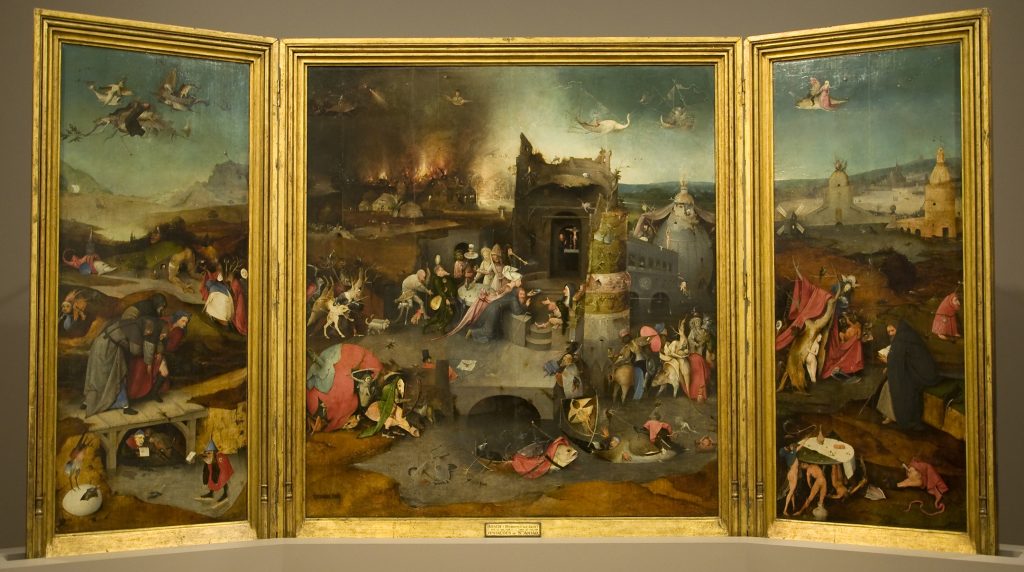
Temptation of Saint Anthony | Hieronymus Bosch
January 18, 2022High culture has pretty much disappeared along with the dress code.
Read More
The Art of Richard Diebenkorn
December 18, 2021The Art of Richard Diebenkorn, 1997
Jane Livingston, with essays from John Elderfield and Ruth Fine (The University of California Press)
Forgive me for saying something positive about social media, but it’s allowed for a proliferation of art and images online (which is one of the motivating factors that helped create the Covert Collective); the art historian in me welcomes this, as on Twitter, for example, there’s numerous ‘art bots’ that have filled the sphere with many fine artworks – such as those of Richard Diebenkorn.
“Recognized as a major figure in postwar American painting, Richard Diebenkorn (1922-1993) was an artist strongly identified with California but whose work is beloved throughout the United States and the rest of the world. This catalog is the most comprehensive volume on the artist now available.
Jane Livingston’s extensively researched biographical essay covers Diebenkorn’s entire career and concentrates on the artist’s inner life and purposes as revealed in his paintings. Ruth Fine deals primarily with the figurative aspect of Diebenkorn’s work (1955-67), and John Elderfield concentrates on the Ocean Park period (1967-93). All three authors provide valuable insights based on their personal relationships with the artist and his widow, Phyllis. On both page and canvas, the reader can sense Diebenkorn’s complexity and highly self-conscious working methods, as well as his formidable integrity.
The Art of Richard Diebenkorn will give readers with an interest in all phases of modernism new thoughts about the relationship between abstraction and representation. Stunningly illustrated, with 192 full-color reproductions, this book is an exhilarating testament to a distinctive American artist.” (from the publisher, The University of California Press)
The essays are enjoyable and informative: but the majority of the book is defined by almost 200 full-colour reproductions and that’s why I recommend this book. From Diebenkorn’s still life paintings to his rough portraits to his ephemeral repeated meditations where place and abstraction intersect, this book is rife with beautiful images. “If painting doesn’t offer a way to dream and create emotions, then it’s not worth it”, to quote Pierre Soulages, a contemporary to Diebenkorn, and one can easily get lost among the many images of Diebenkorn’s in this book
This is hopefully to be found at your library (UC Press offers a space to request a copy for the same), or your locally owned bookstore. Since I mentioned social media in this Library suggestion, it would be remiss to not offer links to a Richard Diebenkorn #artbot on Twitter, as a teaser to encourage you to seek out this book.
~ Bart Gazzola
Read More
Recent Comments